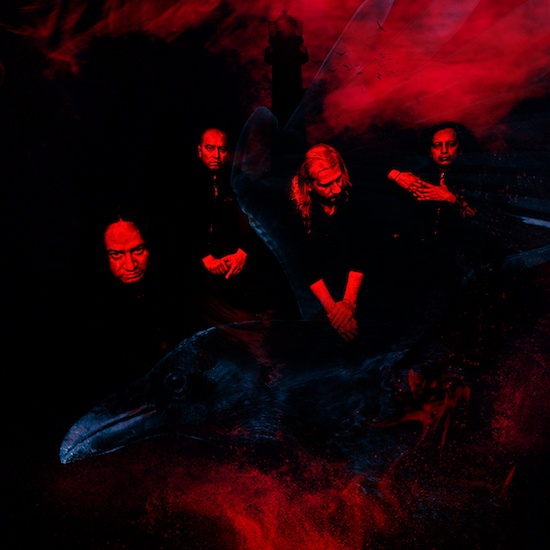
(Here is a new interview by Comrade Aleks, presenting a discussion of both historical value and current interest with Danny Molina, one of the original members of the long-running Ecuadoran death-doom metal band Total Death.)
As a doom metal qualified researcher I always find it thrilling to discover gems hidden from the eyes of a wider audience.
I can’t label Total Death from Ecuador as an absolutely underground act, because they are well-known among many, but this band being born 30 (!!!) years ago was something new for me. They started to elaborate their sound from black and death metal components, and let me tell you – their first years aren’t marked with big releases. It took time before they came to a debut full-length El Rostro Que Llevamos Dentro, and it took time before they made their sure steps into doom territories.
Total Death celebrated the end of 2020 in good form with a new, fifth, full-length album Mar de Aguas Amargas . Two of its original members, as the band’s core. Danny Molina (drums) and Ider Farfán (guitars, vocals) have kept Total Death working since 1991, and Danny told me a lot of things about the band’s past and present.
Hello Danny! How are you? How is Ecuador faring with the second Covid wave? How do you spend your lockdown?
Hello dear brothers and sisters from NoCleanSinging! Well, we’re doing well, looking after ourselves until this is over. In Ecuador, there are many infected people; some medical centers have reached full capacity, and we’re going through tough times, but you know how governments and companies operate. Nowadays, the economy of our country is prioritized over health.
Other than that, we’ve been actively working on promoting our new album Mar de Aguas Amargas. It was stressful work finishing the album and planning the release during a pandemic, but we did it. The album was released on digital platforms on August 18th, and on November 1st we released the physical album through the Mexican label Sun Empire. It was a lot of work but we did it.
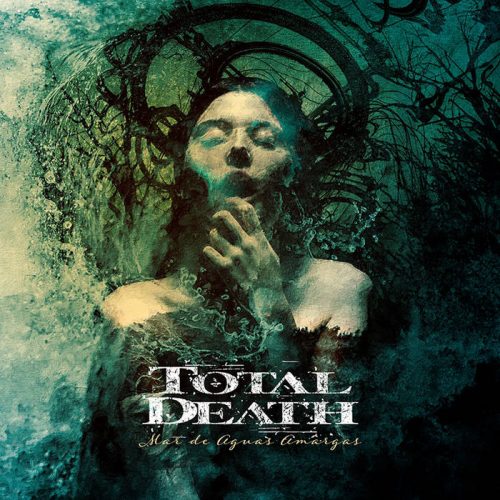
What was the most stressful part of working on Mar de Aguas Amargas?
It was actually very relaxing work in terms of composing the music and recording it. For the mixing process, we had originally planned to work with Ola Ersfjord (Tribulation, The Hellacopters). We met up in Madrid, had a few drinks and had a long talk to arrange how we were going to work, but in the end we changed our plans because we were in a different mood. In fact, when we were working on the final album arrangements, we realized we didn’t want it to sound as we had originally planned, which was a more vintage sound, more oriented to what Ola Ersfjord was doing. We had a lot of arrangements, we wanted a brighter sound – I’m not sure if “cleaner” would be the word – but we wanted something more meticulous, hence the change of producer to Sergio Peiro from Spain, who has a pop and jazz background.
Perhaps the mixing stage was the most stressful; the mastering process was done by Tony Lindgren and Jens Bogren at Fascination Street and they already know what we wanted for the final touches; it’s always a great honor to work with these geniuses.
Total Death isn’t well-known in this part of the world, so let me start from the very beginning. How was the band born back in 1991?
When we started playing, we were heavily influenced by the explosion of underground bands throughout the world, at the height of bands such as Paradise Lost from the UK, or At the Gates and their With Fear I Kiss the Burning Darkness, but always in search of our own sound. When we started out, we were 15, which explains our old school name, lol, but we always wanted to sound Latin while being influenced by European bands.
Total Death – La Sed Invisible
What were your surroundings in the ’90s? What was your local scene like back then?
Ecuador was always influenced by American trends. Bands like Monstrosity, Cannibal Corpse or Malevolent Creation were the most respected by the extreme audience of the capital of our country, Quito, which is where we’re from. You know that at the time, grindcore and bands like Napalm Death or Repulsion dominated the underground world, and our country wasn’t far behind with having bands like them. There were many bands playing thrash, grind and a lot of heavy metal.
There were bands like Brutal Massacre, which was a GrindNoise band; Chancro Duro, a Noise band. There were a few Death metal bands and Obertura was among them; they played thrash with some American death overtones and a little punk – something very common back in the day. Damage Skull was the first death metal band in this country, but they never became well-known. CRY also had a thrash vibe and some death metal here and there.
We have to remember that back then, the most famous Latin band was Sepultura with their Schizophrenia album, and everybody wanted to be like them. We were part of a worldwide tape-trading network, so we consumed other genres of metal, such as the first albums by Orphaned Land, Nightfall, Nihilist (later Entombed) or Treblinka (later Tiamat), which truly helped us have another vision of music and how to know our way around the scene.
How did you spend this period? How often and where did you play live?
We had many local shows and we toured cities close to the center of the country. Not until the late ’90s did we start playing abroad in countries like Colombia and Peru. It was a fun time with a lot of rock ‘n roll and we met a lot of people.
Was Total Death the only doomy band there in Ecuador in the ’90s? Did the doom metal scene change later?
We started out with this doom-oriented sound in the country; however, at the same time there were other bands like LASEN (who still play and are very experimental-doom-oriented – they’re great!) or other bands like PROCESION who disappeared back then. Nowadays, there aren’t any doom metal bands in Quito; there are black metal fusions with gothic elements, or with gothic rock, but not doom.
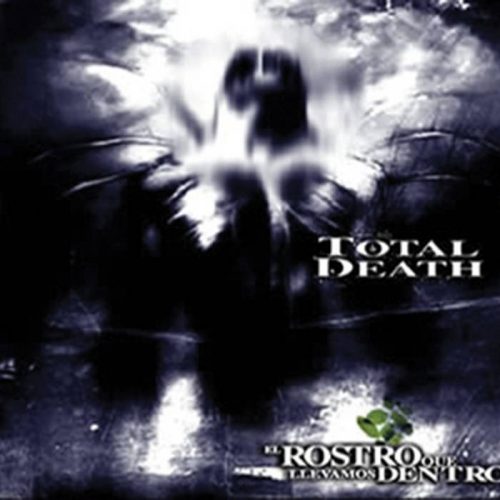
It’s said that Total Death started as a death / black band but your full-length debut El Rostro Que Ilevamos Dentro tends towards melancholic doom-death metal. What were your main influences?
The black metal soundtrack has always flown through our veins. We saw its birth, and it was one of the ingredients of our music, and to this day you can hear black-influenced riffs in Total Death’s new music. It’s one of our favorite genres, but as you said yourself, El Rostro… started showing another spirit; basically our music is about being able to express different moods. We have always been intimist and we take it to the limit when we create really deep songs, which are sometimes dark and depressive. We’ve always liked British doom, like Paradise Lost or My Dying Bride’s earliest music, but also Swedish bands like Katatonia and others, such as At the Gates or Dark Tranquillity. However, we’re very open-minded to influences.
Did this release draw outside attention to the band? Did the label help you with promotion or did you promote Total Death yourself?
We’ve always promoted our work ourselves. It’s unfortunate, but we live in a continent that doesn’t have big labels and our style is not mainstream, and every time we introduce ourselves to European or American labels, they haven’t been particularly interested in us, but this album has helped us play in neighboring countries and has made us known to melomaniacs who are hungry for Latin music that has something special to share.
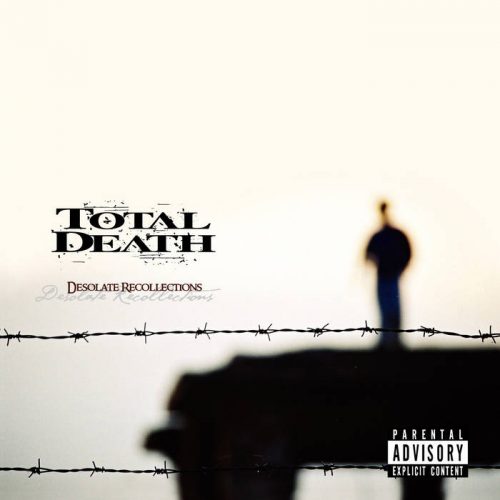
With the following album Desolate Recollections (2007) you switched from Spanish lyrics into English but kept the same early Anathema-focused themes as the basis of your songs. How did you compose this material? Did you have a chief song-writer in the band?
By then, we had already been intending to tour Europe or the United States, so we said to ourselves, “Let’s pay for a truly grand production with first-world sound; let’s play and record in Brazil.” Brazil is one of the most powerful countries when it comes to this genre – there are a lot of rockers and metalheads there, and it was an amazing learning experience in every sense of the word, both in the studio as well as in shows. We met a lot of important people from the scene, such as Aquiles Priester, who had just left Angra; Joao Gordo and some members of Ratos de Porao; the primary Nervosa, Eloy CasaGrande; we had an insight into the Brazilian jet-set, so it was a very educational experience.
Ider has always been the one who writes the layout of our songs and then we all participate in the process; I’ve always written the lyrics, always with an intimist touch, which is why they resemble Anathema’s lyrics. However, we always add other components – there’s always depression, but there’s also violence and hatred in some songs, so there’s a duality to the music and to the song-writing process. We switched to English in the hopes of expanding our horizons and it resulted in more reviews and more attention from international media. It was a good way to see what happened with that language.
Total Death – Rencor Signo Sublime
Desolate Recollections was recorded in São Paulo, Brazil. How did you manage to get there? What are your memories of this recording session?
Yes, it was recorded in Sao Paulo at Mr Som, which belongs to the legendary thrashers Korzus. We had been talking to them previously and we became interested in the recording quality that they were producing. Actually, they had won a Latin Grammy with one of their productions, so we were very excited about recording there. They really liked our music and they’d never recorded a death-doom band before. They liked the different atmospheres we created with our songs and the sessions were laid-back and we took the opportunity to play some shows in Brazil; it was a wonderful experience.
We met many metal icons from Brazil, and Fabio Laguna (Angra, Hangar, Freakeys) played with us. He’s a well-known personality of the progressive heavy metal scene in Brazil, and in the studio, there were always important people from the scene as well. We also got to meet the original Nervosa there, recording their demo.
There are three years between Desolate Recollections and Somatic, and this album is much heavier, angrier, more extreme and more solid. How did you reach such a result?
It was another phase of our lives; we wanted to make something more somber, with more aggressive voices, more double-bass drum and darker atmospheres. We felt like doing something with more hatred instead of romanticism or depression, and we succeeded. We really liked that album and it got released in two formats in Mexico through American Line and with it, we were able open for bands like Opeth or Dark Tranquillity abroad.
It was obvious that with the results we got with Desolate Recollections, what we were going to do next was record again in Sao Paulo, play more shows there, and keep expanding our music on that side of the continent; the only difference is that this album was mastered by Andy LaRocque at Sonic Train Studios in Sweden.
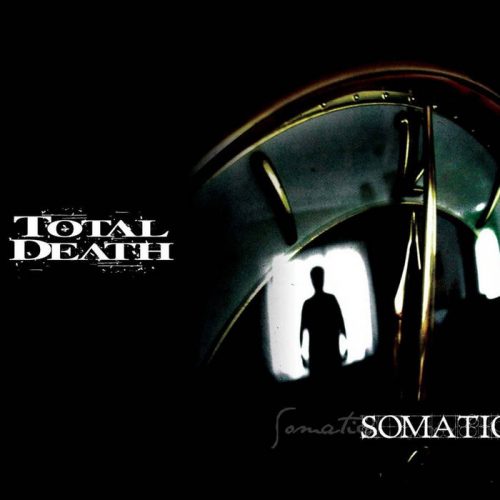
Did you see Total Death as a touring band? You already had three full-length albums in your discography by the time of Somatic and I wonder how often you have had the chance to play outside of Ecuador.
We’ve played often in Brazil; we’ve done three tours and festivals there and we were part of Possessed’s return to the main stages. We played in Peru, Colombia, and some festivals in Ecuador. It was a time of many shows.
Which gigs do you consider to be your highlights?
Shows like the return of Possessed to the stage on a Brazilian tour were definitely a highlight of our career. We were Rotting Christ’s opening act in Latin America; they were memorable shows. Our special performance on 70,000 tons of metal of 2017 was also a great experience. There are many shows in the US and Mexico that we’ll never forget!
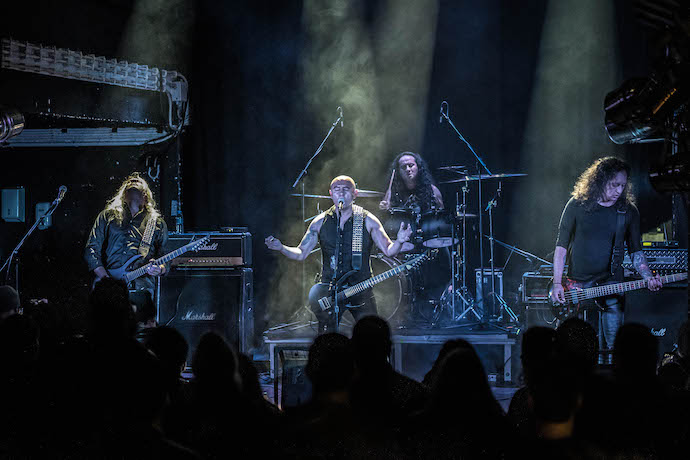
There were then six years between 2014’s Inmerso en la Sangre album and Mar de Aguas Amargas, which was released in November 2020. But you filled the gap with two EPs and one split. Why did you choose smaller releases instead of a full-length album?
When we thought of recording Inmerso en la Sangre, we had a radical line-up change. The idea was to outdo our two previous albums, so we went to Mexico to record it and we mastered it with Jens Bogren at Fascination Street Studios. This album was released in four different editions with a 7-inch vinyl single. It had a very interesting media display, which took us to play in the US and Mexico a few times, as well as a special performance at 70,000 Tons of Metal, with great success.
With that drive and the need to record new material that could outdo Inmerso en la Sangre, we decided to test three tracks with Dan Swanö as the producer and the result was really good. We tried a studio in our country and we mixed and mastered it remotely in Sweden with Dan. It was a new way to work and that’s how the EP Sorrowful and Immaculate Heart was born. It was released by Concreto Records from Mexico. This material was pretty much a test to prove what we could do with great producers, with our country as the headquarters.
Soon after this EP, we had another line-up change while we were working on composing Mar de Aguas Amargas. Our plan was to record, mix and master this material in Sweden; Plan B was to record it in Canada and Plan C to do it in Spain. None of these plans came together, lol, because we decided to do a test recording at a new studio in Ecuador, again with three songs, which resulted in La Noche Oscura del Alma and it got released in Europe in 10-inch vinyl.
What’s interesting about this material is that we have always been Mar de Grises fans, and we learned through Ana Carolina Ojeda from the remarkable Mourning Sun that Rodrigo Morris, lead guitarist of Mar de Grises, was producing, and doing it well, so we said “let’s treat ourselves to working with this Latin doom knight”, and that’s how this new material came to be and we love it. By the way, it was mastered by Jens Bogren again.
With all this, we played a few dates in Spain and Portugal in December 2019, including the renowned Under the Doom festival, next to Alcest, Paradise Lost and Daylight Dies. During this tour, we met Sergio Peiro, who had produced Evadne’s latest album, and so we got to talking and decided to stay connected, and in the middle of a world pandemic, we decided to work with him. As you can see, we’ve been very active this whole time.
How do you see your progress on the Mar de Aguas Amargas? How far did you go from the point where you were with El Rostro Que Ilevamos Dentro?
I believe our essence remains untouched. Perhaps we are now better musicians and we know a lot of people from the scene, from our favorite bands. We have played in great festivals around the world and that has added to our experience. We are now much more open to exploring different sounds and we have creatively expanded our musical horizons. We’re no longer afraid of making 10-minute-long songs and it’s much clearer to us now what we want to do. These twenty years have not been fruitless.
Total Death – La sombra del alma
What’s the concept behind the lyrics of El Rostro Que Llevamos Dentro? It leaves an impression that all the songs are connected to one common theme.
Our albums have always had conceptual threads. In El Rostro Que Llevamos Dentro, the common ground was romantic heartbreak, lol. Imagine that – we were 20. We were little kids who wanted to express how we felt about grief, hatred and actual depression in every song.
And what about Mar de Aguas Amargas?
It all comes from the thought of the origin of life and its relation to water; that metaphor about the sea comes from that, the ocean that leaves an impression because of its vastness, its strength and its hypnotic swaying of the waves; its dark side, violent and dangerous, which creates a host of stimulating but murky sensations flowing into fear; that uncontrollable strength of the rough waters, which could be compared to life, to the lack of control of what happens below the surface of the sea and its relation to emotions. We wanted to capture these conclusions in dense heavy music, with many climaxes and deep lyrics. Since we had also played on 70k, we really got into partying hard on a boat in the sea, lol, so we’ve been going every year until 2020; that connection with the sea also comes from there.
Danny, you said the band promotes its albums usually on its own, and I’ve got an impression that you really aim to reach more listeners. So how do you promote a new album during lockdown times?
The album was released on Digipack and jewel-case in North America without any issues and with great success in sales. I believe Sun Empire Records is doing things really well in terms of distribution of the material and we have had a lot of interviews to promote it. Also, you know that nowadays streaming on digital music platforms plays its role and we have many listeners streaming from all over the world. We are planning on releasing this album on 12-inch vinyl in the first quarter of 2021. We’re booked to play in October in the Mexico Metal Fest in Monterrey, Mexico, next to great bands such as Mayhem, Necrophobic, SepticFlesh, Sodom, Kreator, Immolation, among others, so we’ve kept ourselves busy.
Then I wish you all the best with this endeavor. Let’s hope we’ll be able to have gigs again this year on a regular basis. Thank you for interview; let’s finish with one last question about Total Death’s plans for the forthcoming months.
Thanks my dear Aleksey; we’re also looking forward to starting live shows again this year on international stages, to continuing the promotion of our new album; as you know, there are some copies available through Sun Empire Records from Mexico.
If you haven’t listened to our music yet, I invite you to search for us on digital platforms or drop us a line on social media – we’re always active there. A big hug to you and stay safe!
https://totaldeath.bandcamp.com/music
https://www.facebook.com/muertetotal
